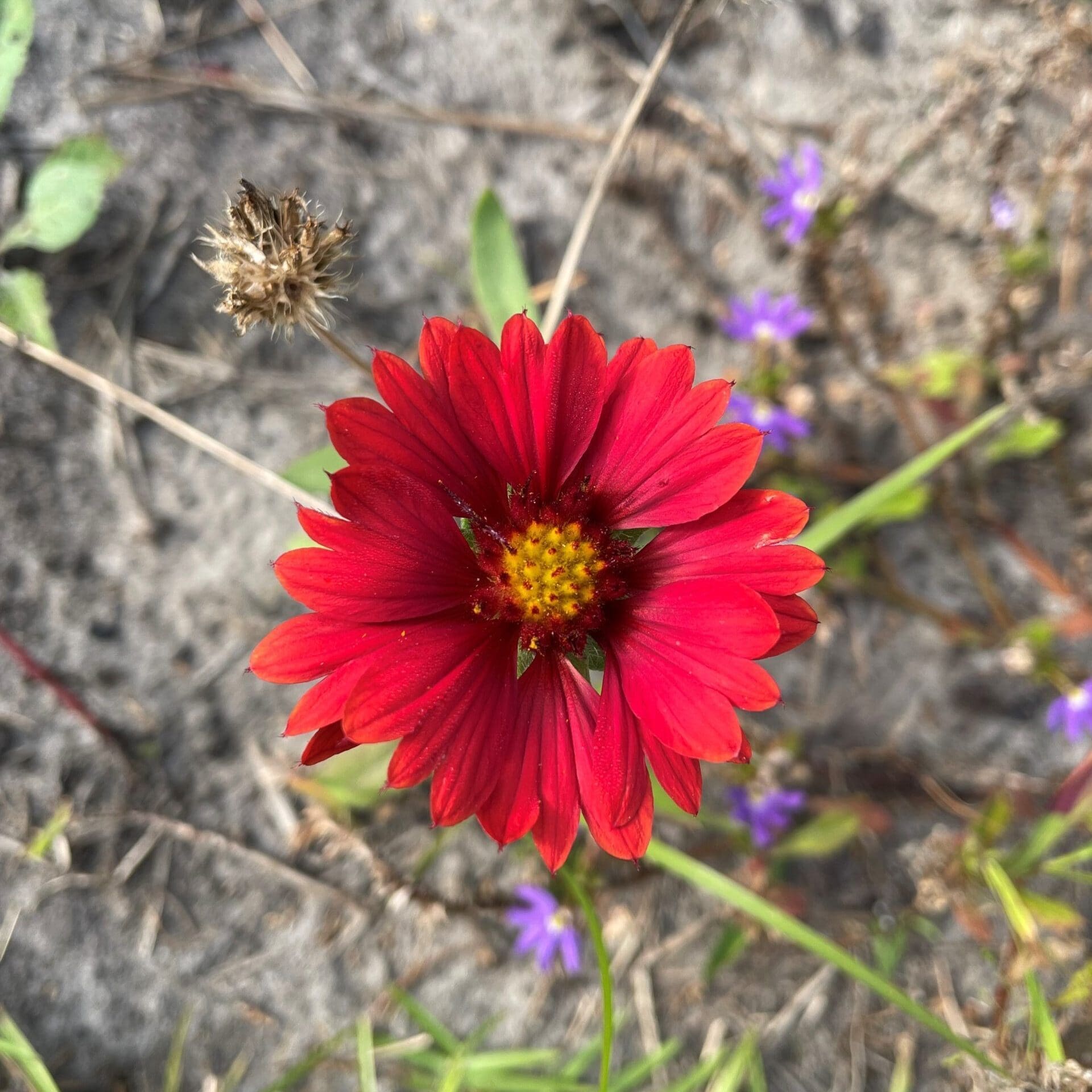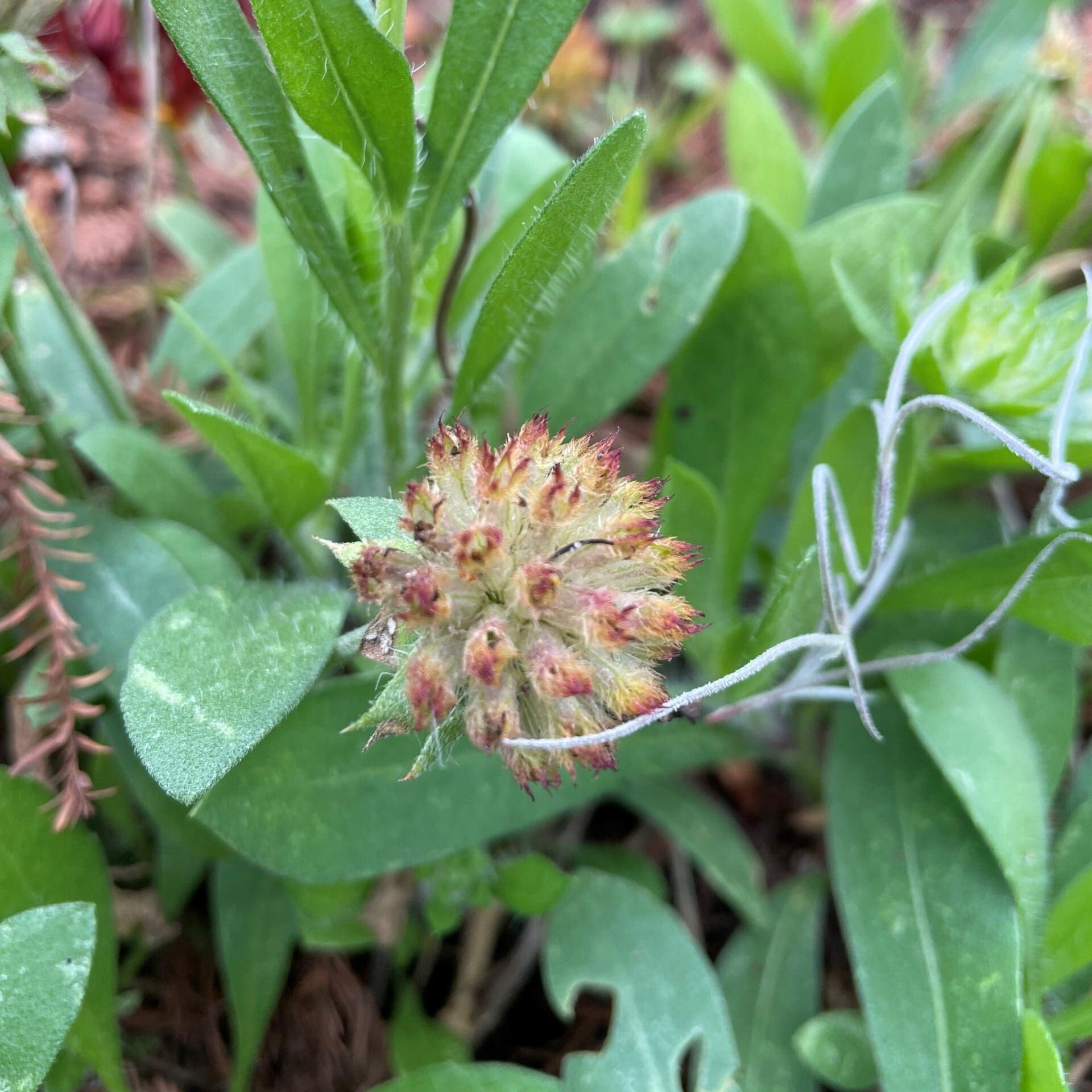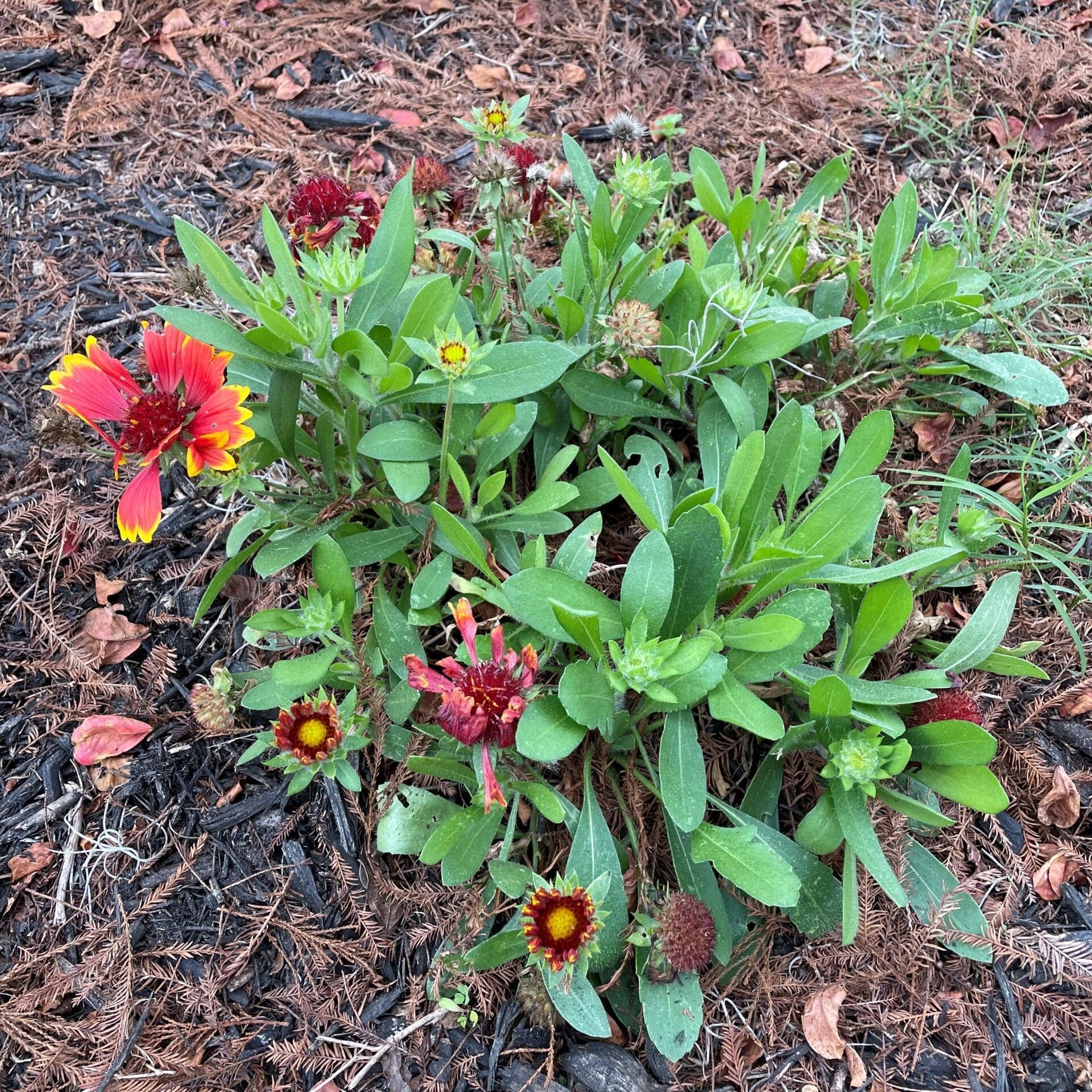Asteraceae
Indian blanket
Gaillardia pulchella
Synonyms
Gaillardia bicolor var. drummondii
Gaillardia neomexicana
Gaillardia pulchella var. drummondii
Gaillardia villosa
Other Common Names
firewheel, beach blanket flower
Plant Type
Herbaceous Wildflower
Life Cycle
Annual
Typical Size
1.5-2 ft. tall
1-2 ft. wide
Tolerant of
Drought
Inolerant of
Poorly Drained Soil
Propagation
By seed
Plant Propagation Notes
No pretreatment required for germination.
Plant Planting Notes
Space 6-12″ apart.
Plants/Diseases
No serious disease or insect problems. Root rot may occur in poorly drained soils. Mild susceptibility to aphids and thrips.
Wildlife Benefits
Nectar/pollen source for pollinating insects, Fruit/seeds for birds
Leaves
Leaves alternate. Blades linear, oblong, or spatulate with entire margins. Sometimes lobed. Covered in jointed hairs.
Flowers
Typically rays are red with yellow/orange outer tips, but can be solid red/burgundy, golden yellow, orange, or purple. Heads are made up of 7-20 rays and central disc flowers approximately 3 inches wide.
Fruit
Obpyramidal single seeded cypselae with 7-8 hair tufts.
Bark
Upright stems lacking leaves toward the flower head.
Toxicity
No known toxicity.
Ethnobotanical Use
Teas made from Gaillardia pulchella were used to help gastro-intestinal issues. Tea baths were used to help relieve pain of nursing women.
The Kiowa people believed the plant to have brought good luck.

USDA Hardiness Zones
3, 4, 5, 6, 7, 8, 9, 10
Light Exposure
Full Sun
Soil Moisture
Dry, Medium
Soil Drainage
Well-drained
Soil pH
Neutral (6.0-8.0)
Native in South Carolina?
No
Closest States Where Native
TX
Plant Native Habitat
Sandy or calcareous soils, often disturbed places, mostly in grasslands or open places.
Global Conservation Status (NatureServe)
Apparently Secure (G4)
Federal Conservation Status (USFWS)
Not Listed
Distribution Notes
Previously considered native in South Carolina by the USDA and Biota of North America Program (BONAP) North America Plant Atlas (NAPA); however, based on recent work by Weakley et al., now considered native in TX but naturalized along the Southeast US Coastal Plain.
Subspecies
Gaillardia pulchella var. drummondii



